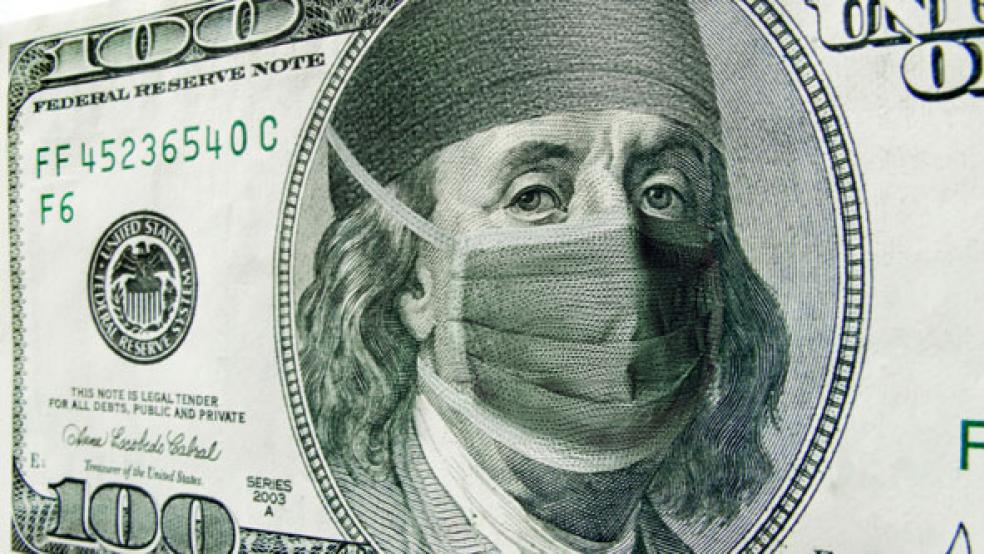Telling most working families that health care costs keep rising every year is like saying there are clouds in the sky. It’s simply an accepted fact.
Yet when we delve into the details of why and how health care costs are climbing – often well beyond the ability of families to keep pace – the picture becomes even more troubling. It provides yet another reason to pursue meaningful reforms.
RELATED: HOW MUCH YOU’LL PAY UNDER OBAMACARE: 5 KEY QUESTIONS
The latest salvo on the unsustainability front comes from the recent Kaiser Family Foundation/Health Research Educational Trust survey on employer health benefits. This is not a big-picture view of everyone in the health care system, just those who receive coverage through their employers – some 149 million non-elderly Americans. The survey found that health care premiums grew more slowly in 2013 that they did through the late 1990s and early 2000s. Even so, most health care consumers have little reason to rejoice. Here’s why, based on the survey’s findings:
1. The rate of increase is unsustainable. The survey reported "modest" increases in insurance premiums – 5 percent for individuals and 4 percent for families. In the most recent year, that translates into an average $5,884 annual premium for singles and $16,351 for families. While single-digit hikes rarely cause alarm, even at 5 percent premiums double over about 14 years.
Employers, of course, can choose to absorb all or part of that cost, but the recent trend has been to pass along more of the total bill in the form of higher out-of-pocket costs such as deductibles and co-pays. In prior decades, under a paternalistic corporate system in which employers provided nearly all retirement and health benefits, most of those costs were borne by employers, for which they received generous tax deductions from the U.S. Treasury.
Keep in mind those tax breaks emerged after World War II because the government didn’t want wages to soar as GIs returned from the war and went to work and started families. Now, with wages flat and employment growth still sluggish from the 2008 meltdown, employers are not as generous in covering health costs – and families are falling behind.
2. The total cost is unprecedented relative to wage income. All told, Kaiser found that there been a total premium increase of 80 percent – yes, 80 percent – from 2003 to 2013. During that decade, average worker contributions to health premiums have nearly doubled – from $2,412 in 2003 to $4,565 this year. Workers at smaller firms pay even more.
The most telling statistic is this: Premiums have climbed three times as fast as wages and inflation. Unless employers have been generous on raises – and most haven’t been, in a low inflation period – families must find other ways to cover these costs.
3. Out-of-pocket costs are soaring. Remember the days when employers offered cradle-to-grave coverage well into retirement, with nearly everything covered? That’s a rarity today. Now 78 percent of workers surveyed have to pay a deductible – more than $1,000 – which is up from 72 percent last year.
4. Employers will be eyeing health exchanges carefully. Nearly a third of large employers –those with at least 5,000 workers—said they are considering offering benefits through private exchanges. Just 7 percent of employers with less than 1,000 workers said they would consider private exchanges.
While it’s not known how many businesses will drop their coverage if they find a better deal through their state, the new plans will offer some competition. Even if that serves to lower overall costs, some employees could face higher costs if they don’t meet certain health guidelines. “This will be an important issue to watch next year, as employers will have more flexibility and could ask workers to pay more because of their lifestyles and health conditions,” said Kaiser Vice President Gary Claxton, the study’s lead investigator and director of the Foundation’s Health Care Marketplace Project.
MORE EMPLOYERS PROACTIVE IN COST CUTTING
As employee out-of-pocket costs have risen, employers have become more aggressive in promoting programs that have the potential to control costs over a longer term.
Nearly all of the large employers surveyed by Kaiser offered a wellness program. The idea behind these comprehensive plans is that employees who become fitter, eat better, lose weight and control chronic conditions will file fewer insurance claims.
Wellness programs also come paired with financial incentives. Some offer lower deductibles or out-of-pocket costs for participants. More than half of large employers also provide onsite health screening.
Despite the myriad moves in employer health care systems to focus on wellness and long-term health, the larger trend is still a continuing run-up in out-of-pocket expenses. The employer-based system, requiring each employer to bargain for the best premiums and coverage, is still inefficient. As long as that model remains in place, employees can expect to see their health costs rise even more while their wages lag behind health care inflation.






